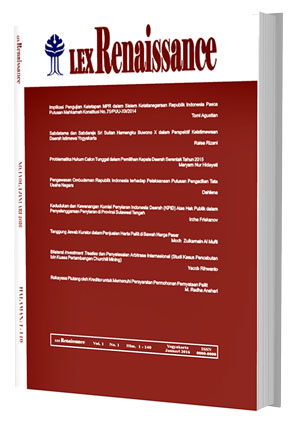Main Article Content
Abstract
The issue of Regulation No. 32 of 2002 about the Broadcasting has altered the process of broadcasting system in Indonesia. The most fundamental change in regulation is about limited transfer of authority to the KPI (Indonesia Broadcasting Committee). This research is to identify some issues: first, the role of KPID (local Indonesia broadcasting committee) in the Province of Central Sulawesi in terms of the broadcasting regulations to public. Second the status and the authority of the KPID in this province in monitoring and evaluating any programs broadcasted in accordance with the Regulation No. 32 of 2002 about Broadcasting. This is a normative-descriptive research. The result of the research showed that first the KPID in the Province of Central Sulawesi has an important role in monitoring the program. In the context of democracy and community empowerment as the citizen, the existence of the strong regulation and pro-public interest are highly needed. The fact reveals that the broadcasting institution is still marginal. In terms of legal perspective, there is an inconsistent interpretation towards the texts of law as there is no detail of sufficient regulation. Second, the status and the authority of KPID in the Province of Central Sulawesi is not the authority of the Constitution 1945 but the authority given by the Law no. 32 of 2002 on the Broadcasting. The KPID in the Province of Central Sulawesi in running its tasks refers to regulation. Internally, KPID also has a drawback in running the monitoring of broadcasting system.
Keywords: KPID of central Sulawesi, broadcasting, authority of KPID
Keywords
Article Details
Authors who publish with this journal agree to the following terms:
a. Authors retain copyright and grant the journal right of first publication with the work simultaneously licensed under a Creative Commons Attribution License that allows others to share the work with an acknowledgement of the work's authorship and initial publication in this journal.
b. Authors are able to enter into separate, additional contractual arrangements for the non-exclusive distribution of the journal's published version of the work (e.g., post it to an institutional repository or publish it in a book), with an acknowledgement of its initial publication in this journal.
c. Authors are permitted and encouraged to post their work online (e.g., in institutional repositories or on their website) prior to and during the submission process, as it can lead to productive exchanges, as well as earlier and greater citation of published work (See The Effect of Open Access).



